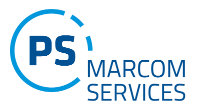Machine vision is one of the most exciting and innovative technologies in the field of automation. Without this technology, many production processes would no longer be feasible today, because the production speeds of modern systems in combination with the constantly increasing quality requirements make manual inspection of goods completely impossible.
Machine vision systems are not only used in production and automation, they are also increasingly present in all areas of everyday life, such as here:
- In sports, they help to review referee decisions or to practice the perfect swing when swinging golf.
- In medicine, they support doctors in their diagnoses.
- In traffic engineering, they manage vehicles intelligently and reduce the risk of accidents or recognize license plates, e.g. for the truck toll.
- In the food industry, they ensure that no unwanted parts get into food or drinks.
- Vision systems have even been used to count fish, deer, gulls, aphids and other animals!
It is estimated that less than 1% of all textiles worldwide are currently recycled. Hyperspectral imaging can classify and automatically separate textile waste according to its composition, color and shape.
High-resolution video recordings can help to play back very fast processes in slow motion, study them in detail, understand the processes precisely and eliminate sources of error on this basis.
Would you also like to describe applications in text or video where machine vision or automation technology play a decisive role? PS Marcom Services will be happy to support you competently! Simply contact us and we will discuss your ideas!












